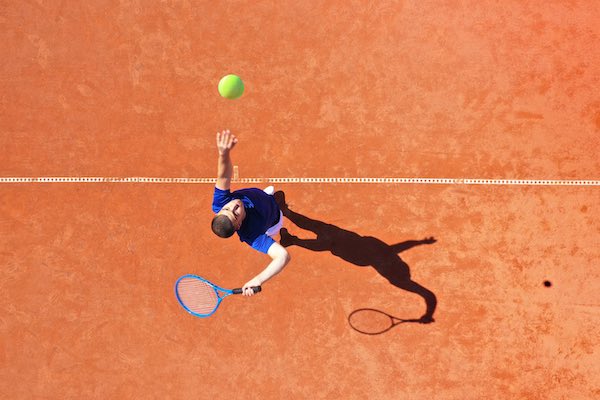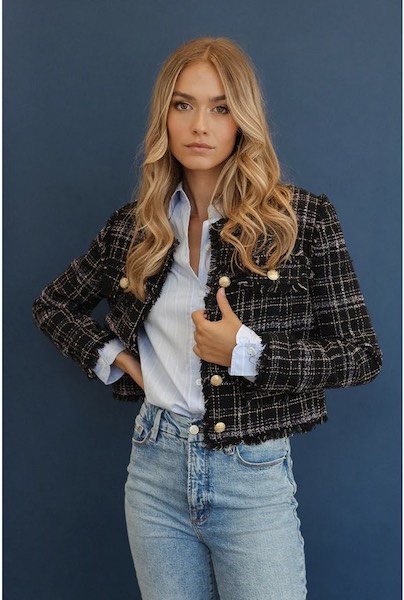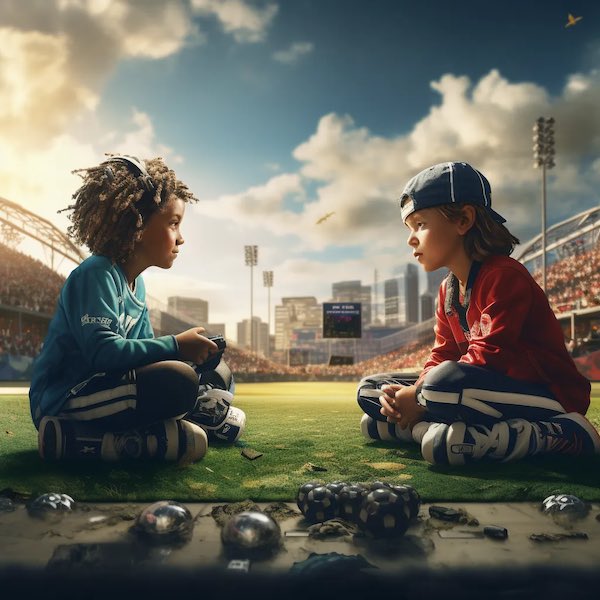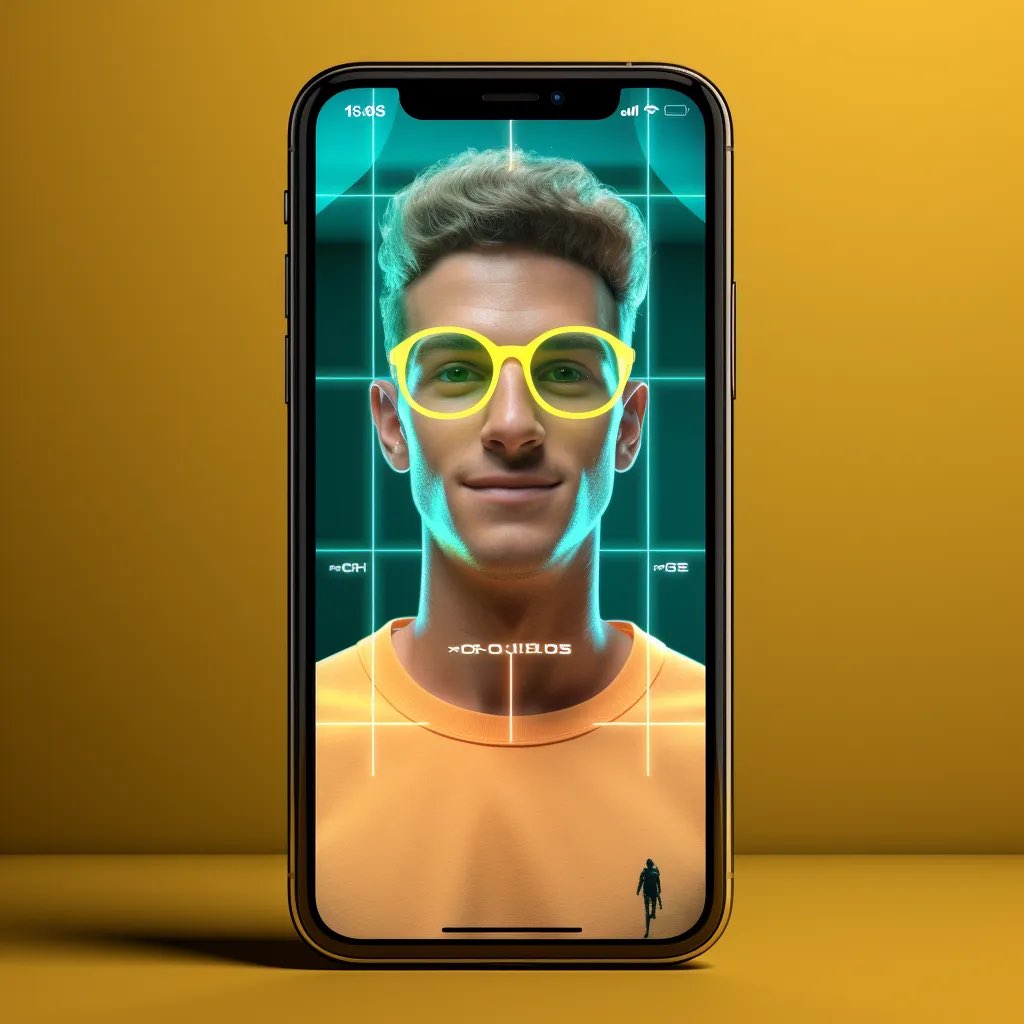National Merit Names 25 From Scarsdale and 14 From Edgemont as Semifinalists
- Details
- Written by Joanne Wallenstein
- Hits: 2263
 Officials of National Merit Scholarship Corporation (NMSC®) announced the names of more than 16,000 Semifinalists in the 69th annual National Merit Scholarship Program. These academically talented high school seniors have an opportunity to continue in the competition for some 7,140 National Merit Scholarships worth nearly $28 million that will be offered next spring. To be considered for a Merit Scholarship® award, Semifinalists must fulfill several requirements to advance to the Finalist level of the competition. About 95 percent of the Semifinalists are expected to attain Finalist standing, and approximately half of the Finalists will win a National Merit Scholarship, earning the Merit Scholar® title.
Officials of National Merit Scholarship Corporation (NMSC®) announced the names of more than 16,000 Semifinalists in the 69th annual National Merit Scholarship Program. These academically talented high school seniors have an opportunity to continue in the competition for some 7,140 National Merit Scholarships worth nearly $28 million that will be offered next spring. To be considered for a Merit Scholarship® award, Semifinalists must fulfill several requirements to advance to the Finalist level of the competition. About 95 percent of the Semifinalists are expected to attain Finalist standing, and approximately half of the Finalists will win a National Merit Scholarship, earning the Merit Scholar® title.
Semifinalists from Scarsdale and Edgemont are:
Scarsdale High School
Nathan H. Breslow
Patrick P. Chen,
Bryan Chung
Kevin V. Daniel
Bryanna Huang
David R.Huang
Adelina Jiang
Harley J. Koch
Allegra Kong
Thomas E. Kornfeld
Thomas R. Kronenberg
Janghee Lee,
Jihao Liu,
Apollonia F. Lulgjuraj
Arianna Makrakis Toniolo
Raza Malik
Sajiv Mehta
Thomas F. Peng
Natasha R. Pereira
Tara M. Pillai
Alexander Rizk
Leon J. Rode
Yejin Sung
Cayden Yang
Edgemont High School
Henry Brinberg,
Bhavani Gopalkrishna
Isabella Jabbour
Eliza M. Kaeding
Kristen E. Lau
Iris Liang
Jiahe Liu
Alexander J. Merzon
Evan D. Merzon
Avantkia Singh
Fiona Stern
Derek Sun
Sophia S. Woo
Donghyun D.Yeo
Over 1.3 million juniors in about 21,000 high schools entered the 2024 National Merit Scholarship Program by taking the 2022 Preliminary SAT/National Merit Scholarship Qualifying Test (PSAT/NMSQT®), which served as an initial screen of program entrants. The nationwide pool of Semifinalists, representing less than one percent of U.S. high school seniors, includes the highest-scoring entrants in each state. The number of Semifinalists in a state is proportional to the state’s percentage of the national total of graduating seniors.
To become a Finalist, the Semifinalist and a high school official must submit a detailed scholarship application, in which they provide information about the Semifinalist’s academic record, participation in school and community activities, demonstrated leadership abilities, employment, and honors and awards received. A Semifinalist must have an outstanding academic record throughout high school, be endorsed and recommended by a high school official, write an essay, and earn SAT® or ACT® scores that confirm the student’s earlier performance on the qualifying test.
From over 16,000 Semifinalists, more than 15,000 are expected to advance to the Finalist level, and in February they will be notified of this designation. All National Merit Scholarship winners will be selected from this group of Finalists. Merit Scholar designees are selected on the basis of their skills, accomplishments, and potential for success in rigorous college studies, without regard to gender, race, ethnic origin, or religious preference.
National Merit Scholarships
Three types of National Merit Scholarships will be offered in the spring of 2024. Every Finalist will compete for one of 2,500 National Merit® $2500 Scholarships that will be awarded on a state-representational basis. About 840 corporate-sponsored Merit Scholarship awards will be provided by approximately 160 corporations and business organizations for Finalists who meet their specified criteria, such as children of the grantor’s employees or residents of communities where sponsor plants or offices are located. In addition, about 160 colleges and universities are expected to finance some 3,800 college-sponsored Merit Scholarship awards for Finalists who will attend the sponsor institution.
National Merit Scholarship winners of 2024 will be announced in four nationwide news releases beginning in April and concluding in July. These scholarship recipients will join nearly 375,000 other distinguished young people who have earned the Merit Scholar title.
Tennis and Pickleball Classic to Benefit Gilda's Club
- Details
- Written by Joanne Wallenstein
- Hits: 704
 Gilda’s Club Westchester is excited to announce their First Annual Tennis and Pickleball Classic event! The event will be held on Thursday, September 7th from 5-8pm at Sunningdale Country Club in Scarsdale.
Gilda’s Club Westchester is excited to announce their First Annual Tennis and Pickleball Classic event! The event will be held on Thursday, September 7th from 5-8pm at Sunningdale Country Club in Scarsdale.
Guests of the inaugural Tennis and Pickleball Classic will dine on a variety of Tapas treats, toast with a glass of sangria and enjoy a variety of games in between Pickleball and Tennis matches. This is a co-ed event, so grab your spouse, friends or family and join us for friendly competition on the court.
Gilda’s Club Westchester’s FREE programs are sustained through fundraising, grants, private donations, and corporate contributions so they rely on events and major donors to keep their red doors open. This event would not be possible without the commitment of their generous sponsors including: Eve and Brant Brooks, Eye Gallery Scarsdale, Pam and Paul Rubin, Gerri and Andrew Sommers and In Kind sponsors: CandyRox, Vintolgy and Three Birds Printing.
Gilda’s Club Westchester provides individual counseling, support groups, workshops, education and social activities all FREE of charge. Their innovative programs are an essential complement to medical care available to those living with a cancer diagnosis, their family and friends, and those who have lost a loved one to cancer.
For more information or to attend the event please contact Kristen Harris at (914) 644-8844 x 122; kharris@gildasclubwestchester.org or visit our website to purchase tickets: www.gildasclubwestchester.org.
Where to Go for Back to School Shopping
- Details
- Written by Wendy MacMillan
- Hits: 835
 With forms to sign, books to order, and a million events to mark on your calendar, getting ready for the start of school can be a hassle…but going “back to school” shopping doesn’t have to be! With local malls, boutique stores, online shopping and so much more, it can be hard to know where to start. So with the help of some of our Scarsdale neighbors we compiled a list of go-to stores to make back to school shopping a whole lot easier, and maybe even a little bit fun!
With forms to sign, books to order, and a million events to mark on your calendar, getting ready for the start of school can be a hassle…but going “back to school” shopping doesn’t have to be! With local malls, boutique stores, online shopping and so much more, it can be hard to know where to start. So with the help of some of our Scarsdale neighbors we compiled a list of go-to stores to make back to school shopping a whole lot easier, and maybe even a little bit fun!
Just around the corner in White Plains, the obvious place to start is the Westchester. After grabbing a “Pink Drink” or some pretzels, older kids and teens are happy to walk around with their friends and check out stores like American Eagle Outfitters, Urban Outfitters, Aerie, and Aritzia among others. But while the mall is host to a Janie and Jack’s, and Nordstrom does have a decent children’s section…families with young children might want to check out venues like Ridge Hill just across the way in Yonkers.
Not only does Ridge Hill (an outdoor shopping mall) offer stores like Gap, Old Navy, and H&M (for kids who are still growing like weeds), it also has a playground, a host of kid-friendly restaurants, Rockin Jump, Monster Minigolf, Legoland, and a movie theater. So you can get all of your shopping done and have a fun-filled outing with the whole family!
While some, like Scarsdale mom and real estate agent Stacey Mayer, prefer the ease of shopping online, those who opt to shop in person (or need to make an in-person return) can also find stores like H&M, Gap, Forever 21, Aeropostale, and Zara at the Cross County Center. Another Scarsdale mom, Nancy Kaplan, loves stores like Zara for the basics but her favorite online stores for young kids are Rockets of Awesome and Lola & the Boys.
When shopping for trendier looks, Mayer is a fan of Denny's on Central Park Avenue in Scarsdale and Lester’s at the Rye Ridge Shopping Center in Rye Ridge. If you are over at Rye Ridge with your teen girl, you might want to pop into Mixology (if you haven’t already visited the one in our village), or Vanilla Sky. A couple doors down, you can find all your sport gear needs at Sport Tech and then pop into Cava, Chipotle, or Dig Inn for lunch.
To-Dao Casey, also a Scarsdale real estate agent and Fox Meadow mom, suggests going a little further afield and believes, “Woodbury Commons is perfect for back to school shopping. While it is kind of a hike, you can make it a full day activity- everyone can bring a friend and there is a store for every style!”
Several Scarsdale teens swear that the only place to shop is down in SoHo and other trendy NYC neighborhoods. But for something a little closer to home, they are also happy to spend a day on Greenwich Avenue in Greenwich where they can find stores like Brandy Melville, Love Shack Fancy, and Roller Rabbit.
Lastly, this list wouldn’t be complete without a suggestion from Scarsdale’s own fashion maven Sandy Krupkin. Krupkin is a fashion consultant and curator of pop up shops in Westchester. She suggests that if you happen to be out east in the Hamptons as summer is winding down, you might want to check out Tenet for your teens as they have a great sale and well-priced shorts and coordinating tees for boys. Krupkin is also a fan of Off Fifth for teens because “they have great elevated basics at a good price. For more fashion inspiration you can follow Krupkin at @sandykrup or @popupwestchester.
If our readers have other favorite go-to stores for all of your back to school needs, please leave your suggestions in the comments!
Wendy MacMillan is a former teacher and a proud mom of two children.
Are Kids Playing Enough Sports?
- Details
- Written by Sameer Ahuja
- Hits: 1080
 (Submitted by Scarsdale Village Trustee Sameer Ahuja)
(Submitted by Scarsdale Village Trustee Sameer Ahuja)
“Wait kids, whoever said you had to be good to play football? You play football because you want to. You play football because it’s fun. You play football so you can go out there and pretend you’re Joe Montana throwing a touchdown pass, or Emmett Smith going for a long run. And even if those Cowboys are better than you guys. Even if they beat you 99 times out of 100 that still leaves… one time.”
~Little Giants (1994)
Have you seen the 90’s classic, Little Giants? I’m reminded of it (and its 2000s copycat Kicking and Screaming) when it comes to youth sports.
Here’s a quick recap of the plot: Danny O’Shea (Rick Moranis) is a gas station manager living in the shadow of older brother Kevin (Ed O’Neill) a coach for the local youth football team. Trouble arises when Kevin's team turns down Danny's daughter Becky (Shawna Waldron) because she’s a girl. Danny creates a competing team though the town can realistically support just one. To prove his worth against his brother, Danny coaches his misfits in a crucial playoff.
This film emphasizes how success isn't solely determined by winning. After all, sports are supposed to be fun!
Not only are youth sports a joy to many, but they also provide untold benefits like teamwork and time management skills. Student-athletes must learn to manage school, practices, travel, homework, a job, and more. In many cases, their schedules can become more complex than those of some adults.
Despite so many positives, it seems as if sports have lost some of its spark in recent years. The very fun (Little Giants evokes) appears to have vanished to an extent.
What’s to blame for this turn of events?
Until lately, the pandemic was to blame. Stuck at home, youngsters missed entire seasons after years of hard work. In fact, according to a study by Project Play, kids spent 60% less time playing sports during COVID-19.
But while youth sports definitely took a hit in the past two years, there’s also been a steady decline for at least a decade now—long before social distancing was ever a thing.
So why are kids hanging up the cleats? First off, youth sports have become prohibitively expensive for some. This can create a rift between the haves and have-nots. Meanwhile, community sports programs shuttered in recent years, as they simply can’t compete with increasingly prestigious travel leagues. (This is partly due to how excelling in marquee level sports can earn young people coveted college scholarships.)
When I was growing up, college was more affordable. Many kids didn’t go to school on a sports scholarship or even seek this option. Now with so many higher entry barriers, some parents see sports as a golden ticket to higher education. No longer are good grades and high SAT scores enough. Now, their kids feel pressure to supplement these with sports achievements.
This development may expose another problem: pressure. In a hilarious tryout scene, one dad from Little Giants, describes his over-muscled son, “Won the eight-year-old division of the pass, punt, and run when he was five years old.”
As ridiculous as this scene is, there’s a kernel of truth to it. Children are often expected to start extracurriculars and sports at much younger ages.
Returning to the Project Play study, the author explains, “The more money parents have, the less interest their child has in sports.”
So, it’s not always about finances. Sometimes it’s due to kids’ own disinterest. Certainly, when playing becomes more about achieving other outcomes, the fun melts away. A sport becomes a job. And the magic is gone.
Other critics blame the decline on increased intensity. Thanks to the higher-stakes environment student-athletes now face, injuries are more prevalent. In an interview with Bryant Gumble, sixteen-year-old Emily Gervais explains how an ACL tear ended her soccer career before it ever took off.
Starting her sport at age 4, Emily soon joined a club team. This ran for 11 months out of the year. As Emily details, “There are girls out there that are practicing all day, every day, and if you're not one of them, they will beat you to the spot you want.”
Due to such extreme strenuousness, Emily had to retire from soccer after three— yes, three—knee surgeries. All before reaching 16.
This begs the question: Are we putting too much pressure on our kids? In this same interview, Gumbel talks to Dr. Min Kocher, an orthopedic surgeon specializing in pediatrics. After collecting data from other surgeons, Kocher was shocked to discover youth surgeries skyrocketed nearly 500% in just 10 years.
All this pressure is understandably leading kids to alternatives like video games. Mostly a sedentary activity, it behooves us to understand their appeal. Today’s games are no longer the same mindless side-scrollers of decades past. More akin to works of art, they offer entire worlds, where kids can now socialize, create, even seek the freedom to actualize themselves.
Should kids be more active? Yes, of course.
But we should also realize video games may offer the last (largely) adult-free frontier for children. It’s a space of relief for many kids who are buckling under increasing pressure to perform at school and extracurriculars. All while being forced to continually compare themselves to others on social media.
Our solution may lie here.
As mentioned in my recent TikTok article: today’s kids crave autonomy. Many seek out spaces where they can be themselves, uninhibited by the adult gaze, whether it be parents or teachers. Kids are also highly proficient with digital tech, including tools that haven’t yet been integrated into sports. Imagine a world where kids use digital tech to help each other improve how they play even more. Might there be a healthy way to marry analog and digital even more for youth sports? (I, for one, think it could be a real game-changer.)
Remember, sports come with health benefits baked in.
These can’t be easily replicated by indoor activity. In that spirit, let’s bring back the joy of sports. After all, before we know it, our kids will be grown, out of the house, and most likely… not Lebron James. And that’s okay! Here’s to appreciating the chance to explore such interests without any burden attached to the results. Playing this way just might bring back the fun.
The Future Will Be Filtered: From Y2K to Selfies: The Unexpected Rise of Facial Filters
- Details
- Written by Sameer Ahuja
- Hits: 751
 The following was submitted by Sameer Ahuja, a Scarsdale resident and President of the sports tech company GameChanger. GameChanger's mobile apps are used in all 50 states by millions of youth sports coaches, fans, and athletes to score, stream, and watched by over 6 million youth sports games a year. Ahuja is a Trustee of Scarsdale Village and he writes a newsletter, Consume at Once.
The following was submitted by Sameer Ahuja, a Scarsdale resident and President of the sports tech company GameChanger. GameChanger's mobile apps are used in all 50 states by millions of youth sports coaches, fans, and athletes to score, stream, and watched by over 6 million youth sports games a year. Ahuja is a Trustee of Scarsdale Village and he writes a newsletter, Consume at Once.
(For my younger readers, back in 1999, widespread fears arose of potential computer system failures. These were expected to occur when the year 2000 began.)
Instead, the world didn’t end, and we rang in the new millennium without a global catastrophe.
Okay, we did get one thing we weren’t bargaining for: the selfie.
In 1999, Kyocera released the first-ever front-facing camera on a cell phone. This became a staple for every subsequent device, allowing the masses to embrace the idea of… capturing your own likeness. And just in time for future photo-sharing juggernauts like Facebook, Myspace, and eventually Snapchat, Instagram, and TikTok.
Out of these apps sprung one more thing we weren’t expecting: the widespread acceptance of facial filters. Similar to the creatures from Gremlins, they were at first, innocuous. They were even cute, such as animated filters of dog ears or heart eyes. But they grew up fast. And have gotten out of control.
Nowadays, the most popular filters are beautification based, like removing wrinkles or smoothing out skin. But they can do so much more. “Beauty filters are changing the way young girls see themselves,” according to MIT Technology Review.
One particularly infamous example is TikTok’s Bold Glamour filter. “This filter goes far beyond putting a face-altering layer over someone's image…. Noses are thinned, chins are more sculpted, cheeks are raised, and eyes are brightened, as machine learning (AI) remaps people's faces.”
Similar to Gremlins, there are many (not so good) unintended outcomes from this development. In this two-part series we shall start with exploring how unrealistic beauty aspirations—enabled by recent tech—are negatively affecting our youth and even how we navigate our world of endless screens.
Researchers have sounded the alarm on how social media, and filters in particular, are harming so many teenagers. According to a recent study from ParentsTogether, “Teens who use beauty filters at least weekly are twice as interested in cosmetic surgery and four times as interested in changing their skin color as those who use filters less frequently.”
This has potential to be a problem.
 In fact, cosmetic surgeons have seen massive increases in demand, especially among younger women. As this graphic shows, plastic surgery is no longer for celebrities or to reclaim youth. Chalk it up to the internet, or millennial wellness culture, but it’s clear that selfies (and filters) are playing no small part in this worrisome trend.
In fact, cosmetic surgeons have seen massive increases in demand, especially among younger women. As this graphic shows, plastic surgery is no longer for celebrities or to reclaim youth. Chalk it up to the internet, or millennial wellness culture, but it’s clear that selfies (and filters) are playing no small part in this worrisome trend.
Those who lived through Y2K are old enough to recall when we began interacting online, we were only asked for simple info: our birthday, our classmates, our favorite film were all that were needed to exist and transact online.
Nowadays?
We risk giving up our likeness in ways that we can’t control. What does it mean to have a digital footprint, with thousands of personal data points available in the AI era? For one thing, massive machine learning models can sort through our online visages, using them how they see fit. Virtual kidnappers can now even use deepfake tech to ransom family members.
Fortunately, teams are working on ways to enjoy selfies and filters while skirting facial tracking. One such program Fawkes allows users to “cloak” their appearance to avoid being used for possible facial recognition modeling: “Fawkes ‘poisons’ models that try to learn what you look like, by putting hidden changes into your photos, and using them as Trojan horses to deliver that poison to any facial recognition models of you.”
Large social media platforms themselves are grappling with their position on this topic. They have come under criticism for making body image issues worse for teens. At the same time, they have correctly pointed out that social apps also contribute positive mental health benefits as a result of connection, community, and learning.
Certainly, many tech players have much to gain from this data, and our photos can be used for various purposes without our consent. In one case, Clearview AI used thousands of public photos from the web to build its facial recognition model.
While there are undoubtedly concerns about the impact of social media platforms and filters on mental health and body image, the situation is multifaceted. It's also worth considering the potential benefits and advancements in technology that such data can drive. The ethical use of data is a complex issue that requires ongoing dialogue between tech companies, governments, and users. It involves not only the actions and responsibilities of the companies but also the choices and awareness of individual users, as well as the potential positive aspects of these platforms. The conversation must continue to evolve to ensure a balanced and nuanced understanding of these critical issues.
Simply being aware of these issues in the first place is a key first step. Aside from privacy matters, such innovations are impacting mental health amongst our youth, forcing us to ask: What good is highly advanced tech if it can make our children insecure and miserable?
For now, we can expect to see more image tinkering in every facet of the web. Especially as face filters become more sophisticated, giving rise to AI assistants and even virtual friends. See my next article for more!
Ultimately, the year 2023 is as good a time as ever to ask deep questions about where our intentions lie with tech. Mindful innovation offers the best way forward. Otherwise? Just like Gremlins, we may do more harm than good.
See more from “Consume at Once,” by Sameer Ahuja.













